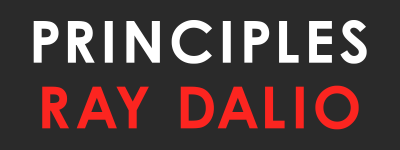The data storage market is estimated to grow at a CAGR of 21% during the forecast period 2019-2025.
The Datasphere will grow from 33 zettabytes in 2018 to a mind-boggling 175ZB by 2025Data storage management is a flourishing business. According to the IDC, the sum of the world’s data – the Datasphere — will grow from 33 zettabytes in 2018 to a mind-boggling 175ZB by 2025. The worldwide market size of big data and analytics is projected to account for impressive $274.3bn by the end of 2020.
The data storage market is said to have already reached from $36bn to $50.4bn by 2018. As estimated in the latest Zion Market Research’s study, it will reach $114.9bn, growing at a CAGR of above 12% between 2019 and 2025.
According to a recent report by IndustryARC, the data storage market is growing fast owing to a wide application of data storage technologies in enterprises that operate in various industries, ranging from telecommunications, consumer electronics, manufacturing, media and entertainment through banking, financial services and insurance to energy, automotive, government, healthcare and education. Industries are increasingly relying on the next-generation data storage technologies, as conventional data storage solutions proved to be inefficient in handling voluminous information on a daily basis.
Enterprise is a major application segment estimated to grow at a CAGR of 23% during the forecast period 2019-2025. This is due to the fact that larger enterprises, including data centers and e-commerce giants, have started building in-house data storage centers which automatically increase the procurement of data storage devices for various applications.
However, growth of data storage business is not determined by enterprise applications alone. The movement to hybrid storage and proliferated use of smart phones, laptops and tablets both by business organisations and individuals have increased demand for more effective data storage solutions.
The total capacity of data stored is increasing by around 60% every year, globallyA study by the International Data Corporation (IDC) found that the total capacity of data stored is increasing by around 60% every year, globally. Secondary storage devices are now renowned for lower consumption of electricity, higher capacity and longer lifetimes.Meanwhile, technologies based on machine learning (ML), Artificial Intelligence (AI) and Internet of Things (IOT), are simplifying ways data are stored, decreasing costs, automating processes, enhancing security and improving reliability.
The newest trend in data storage is non-volatile memory express over Fabrics (NVMe-oF), which allows to deliver high bandwidth with ultra-low latency. NVMe technology is enabling flash drivers, such as USB and memory card devices, to be utilized more for data storage and transfer purposes.
There are also noticeable developments in cloud infrastructure all over the world. Cloud-based solutions are becoming more and more popular with businesses because they can be utilized without any requirement of being physically installed on an organization’s system. Cloud service providers highlight the numerous benefits of data storage in clouds which might be indispensable for better operational performance, such as built-in data resiliency, reduction in overall expenditure, elimination of legacy NAS systems refresh and performance flexibility.
The participants of the data storage market also mention a substantial increase in demand for USB flash drives, memory cards, Solid-State Drives (SSD) and Hard Disk Drives (HDD). These devices have significantly evolved over the past several years as they are platform independent and operable over any kind of an operating system. Restricted access to passwords, encryption as well as control over data transfer even if the internet connection fails make them most preferable among secondary storage devices.
The Asia-Pacific (APAC) region held the largest market share of 37% in the global data storage market in 2018. The data storage semiconductor also known as memory units is increasingly deployed in data center infrastructure of Asian countries, such as Singapore, Hong Kong, China, India and Japan. A rising adoption of smartphones, combined with an increase in disposable incomes, will lead to a further growth in digitalization in developing economies, such as China, Japan, Indonesia, Australia, Malaysia and others.
U.S. companies, like Dell, NetApp, Pure Storage, Nutanix, Hewlett Packard and International Business Machines, dominate the North American data storage market. The flourishing big data analytics applied to increased volume of unstructured data, such as audio files, videos, photos, and various other media files, is primarily driving the next-generation data storage market in Europe. Rapidly rising internet usage is propelling the next-generation data storage market in Latin America.
Major players in the data storage market include Sandisk Corporation, Western Digital, Hitachi Data System Corporation, Samsung Group, IBM Corporation, Amazon Web Services, Inc., Alphabet, Inc., Microsoft Corp., Toshiba Corp, Seagate Technology LLC, IBM Corporation and others. Some of the most popular cloud storage solutions for small businesses include Dropbox, Google Drive, Apple iCloud and Microsoft OneDrive.
Interestingly, data storage providers are no longer bound to local markets and rapidly expand into target markets of their choice. China’s Alibaba Cloud established its presence in the UK last year, adding to its presence in Frankfurt, Germany, and has recently signed an EMEA-wide agreement with Arrow Electronics to distribute its full suite of cloud services in Europe. In the last quarter, Alibaba reported that its cloud revenues had increased by 66% annually. Alibaba’s $1.13bn cloud business is currently worth around 6% of its total income.
Fierce competition among the providers of data storage solutions is anecdotal. For example, five-year-old Yellowbrick Data, which does not possess the same household-name status as some of its older competitors, has virtually entered a “cloud data warehouse war” by launching its flash-storage optimized Cloud Data Warehouse and announcing its Cloud Disaster Recovery (Cloud DR) service that will replicate databases between on-premises and cloud, keep clients’ legacy ETL on-prem and allow users to flexibly migrate data to and from the cloud at will. With standard AWS, Azure or Google, all this would immediately result in increased costs.
Yet, demand for technically advanced data storage solutions remains high and is projected to grow exponentially, meaning that all existing market players and new entrants will be able to increase their revenue.
Image: Michal Jarmoluk
If you have found a spelling error, please, notify us by selecting that text and pressing Ctrl+Enter.











Thanks!
Our editors are notified.